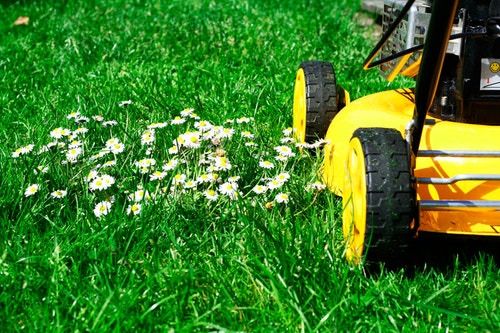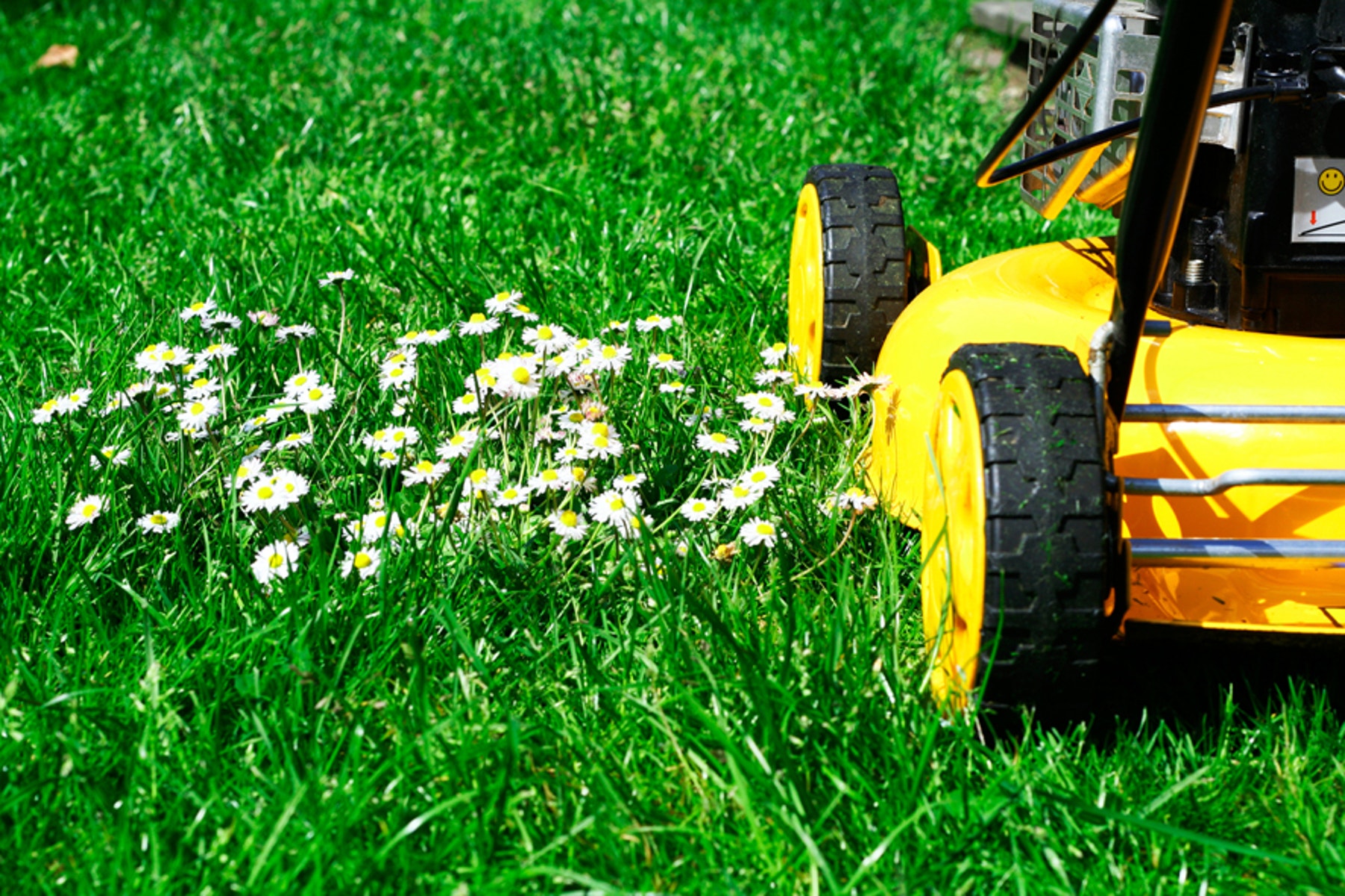Lawn Mower
Apply knowledge and skills related to simple machines, mechanisms, solar powered energy, performance, and fair testing.

The Problem
(3-5 Minutes)
Solar energy can be captured and used in many ways. Solar panels convert solar energy into electrical energy, powering a variety of mechanisms.
The school’s lawn needs to be mowed frequently during the spring and summer months.

Design Brief
(3-5 Minutes)
Motivation
To help in the design process, instruct students to look at the picture on the Student Worksheet and read the accompanying text.
Let students search the Internet to learn more about the appearance, structure and function of different sorts of lawn mowers and solar powered vehicles.
Discuss the constraints and functions they will have to take into account as described by the task.
Your task is to design and build a prototype solution of a lawn mower, powered by solar energy.
Make sure it moves easily and is safe to use.
Suggested Model Solution
Note: You are advised not to share this image with students.
Fair Testing and Fun
(15-20 Minutes)
While the activity is in progress, encourage students to relate their knowledge, skills and understanding to the task at hand by asking:
How will your lawn mower work?
What different sorts of elements will you need?
How will you ensure that it is easy to use?
What mechanism will cause it to move?
How will you ensure that it is safe?
How will you ensure that it is reliable?
When finished constructing, encourage students to reflect on both the product that they have produced and the processes they have used by:
Carrying out tests to evaluate the performance of the lawn mower:
- Do the lawn mowers blades move efficiently? To test if the lawn mower’s blades move, as if cutting grass, try rolling small bits of paper together and see if the lawn mower can move them.
- How will your lawn mower work on a sunny day compared to a cloudy day?
- How easy is it to use?
- How safe is it?
- How reliable is it?
- What are its limitations, if any?
Recording their design by drawing or taking digital photos.
Adding notes to describe the way the model works and how this might be improved to get better performance.
Writing briefly on what went well in their design task and what they could have done to improve it.
Need Help
Teacher Support
Students will be able to apply the knowledge and skills of:
Applying principles of safety and product reliability
Communicating and team working
Designing a prototype solution or prototype product
Engineering design
Renewable energy sources
9686 Simple & Powered Machines Set (two students per set recommended)
9688 Renewable Energy Add-on Set
Materials for enhancing the appearance, design and functionality of the model
Disciplinary Core Ideas: Physical Science
MS-PS3 Energy
Crosscutting Concepts
Cause and effect: Mechanism and explanation
Systems and system models
Energy and matter: Flows, cycles, and conservation
Structure and Function
Stability and change
Science and Engineering Practices
Asking questions and Defining Problems
Developing and using models
Planning and carrying out investigations
Analyzing and interpreting data
Using mathematics, Informational and Computer Technology, and computational thinking
Constructing explanations and designing solutions
Engaging in argument from evidence
Obtaining, evaluating, and communicating information
Common Core English Language Arts
SL 6-8.1
RST 6-8.4
Student Material
Share with:
 Google Classroom
Google Classroom



